This is probably the most diverse genus of bulbs growing in the western hemisphere. Calochortus are found in western North America, Mexico, and south to Guatemala. Although some have felt that it has warranted its own family, Calochortaceae, currently more authorities are including it in Liliaceae. The greatest concentration of species is found in California.
There are three good sources of information on Calochortus. The first is: Frank Callahan, "The Genus Calochortus," in McGary, 2001 found listed in References. The second is Calochortus, Gerritsen and Parsons, 2007 found listed in References. The authors of this book, Mary Gerritsen and Ron Parsons, have provided a lot of pictures and information that can be found on the species Calochortus wiki pages. The third is Mariposa, the newsletter of the Calochortus Society, a quarterly issued between 1989 and 2005 and edited during those years by Hugh McDonald, Jim and Georgie Robinett, and Diana Chapman. Issues of this newsletter can be referenced from our wiki Mariposa page and other information about species from the newsletter has been added about individual species. McDonald has kindly supplied photos he has taken of Calochortus, many taken on his travels. To see them go to the Gallery of Calochortus photographs.
See also A Photographic Tour of the Genus Calochortus with Jeff Bisbee on the YouTube channel of the Redbud Chapter of the California Native Plant Society.
Click for archive copy...
PBS has an archive copy of this video below (please support CNPS by using the above link):
Although Calochortus have a reputation as being difficult to grow, raising them from seed is manageable given the right conditions. Here are some guidelines from PBS list members:
- Seeds of Calochortus can last about 5-6 years but longevity may be extended if stored in the refrigerator (Michael Mace).
- In mediterranean climates, sow the seeds thinly in the fall in a well-drained mix. Good seeds will germinate very well but in crowded conditions seedlings will damp off very quickly. In California, it is never recommended to sow seeds in spring because they will not have enough time to build up bulb mass to last through the summer (Diana Chapman, Michael Mace).
- Mary Sue Ittner found in her wet northern California garden that sowing in late January meant she lost fewer seedlings to damping off.
- Sow the seeds and keep the pots outdoors where they get some cooler temperatures of about 40-70 °F (4-21 °C). Some sources suggest that prolonged higher temperatures can reduce germination.
- Sow the seeds outside and cover the seeds with a thick (half inch at least) layer of coarse decomposed granite (Diana Chapman) although some members feel the tiny seeds could have trouble pushing up through that much weight. They say covering the seeds with a 1/4-1/2" (1/2-1 cm) of seedling mix is sufficient (Nhu Nguyen, Michael Mace).
- In areas with cold winters such as the UK, it is recommended that seeds be sown in spring so that the seedlings can benefit from decent light and warmth.
- Some growers in too cold winters and too hot summers have success growing seedlings under lights indoors.
- Seeds will germinate in less than 6 weeks, although some may not germinate until the following year.
- Once germinated, fertilize the seedlings with a low nitrogen, high phosphorous fertilizer. Fertilization will greatly increase the size of both seedlings and adult bulbs.
- Stop watering when seedlings start to yellow and allow them to go into a completely dry dormancy (Nhu Nguyen).
- Mexican species should be sown in spring and kept moist in summer.
- If your species of Calochortus do not offset dependably, you will need to save seed each summer and plant each fall. I have found I need to keep a steady supply of non-off setting bulbs coming on to replace the no-shows. They may return for years, then one year for no apparent reason, they are gone. It is nice to have backups. If they offset, you may not need to do this, just use the offsets for replacements. (Jim Barton)
- Mary Gerritsen's book, Calochortus, provides a list of species which need to be stratified before sowing.
You can find much more detailed information on Calochortus culture, including advice on soils, pots, and watering schedules, here: How to grow Calochortus
Photos of representatives of the different subsections of Marion Ownbey's section Calochortus
Photos of representatives of the different subsections of Marion Ownbey's section Mariposa
Photos of representatives of the different subsections of Marion Ownbey's section Cyclobothra
The diversity of Calochortus species is reflected in the wide range of English common names applied to the flowers. Unfortunately, the common names do not align cleanly with the scientific subsections above. But here is a quick guide:
- Mariposa Tulips are large, upright, bowl-shaped flowers, often with intricate color markings and sometimes hairs. Calochortus venustus is an example.
- Pussy Ears or Cat's Ears are small, upright flowers with very hairy tepals. Calochortus tolmiei is an example.
- Globe Tulips or Fairy Lanterns are nodding, roughly spherical flowers. Calochortus amabilis is an example.
- Star Tulips are small, upright flowers that resemble miniature Mariposas, although they usually have fewer markings. Calochortus uniflorus is an example.
For more information and pictures of the species, click on the pages listed below or on the species name in the table below.
Calochortus hybrids - Calochortus species a-b - Calochortus species c-d - Calochortus species e-lo - Calochortus species lu-n - Calochortus species o-r - Calochortus species s - Calochortus species t-u - Calochortus species v-z
Calochortus hybrids - Calochortus species a-b - Calochortus species c-d - Calochortus species e-lo - Calochortus species lu-n - Calochortus species o-r - Calochortus species s - Calochortus species t-u - Calochortus species v-z
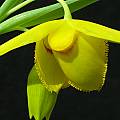
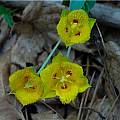
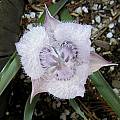
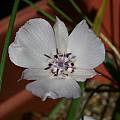
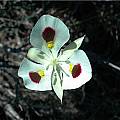
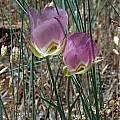

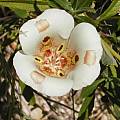
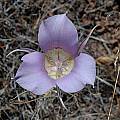
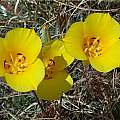
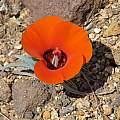
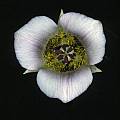
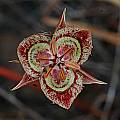
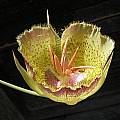
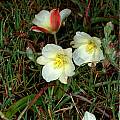
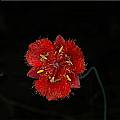
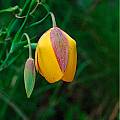

![Calochortus albus var. albus, UCBG, Nhu Nguyen [Shift+click to enlarge, Click to go to wiki entry] Calochortus albus var. albus, UCBG, Nhu Nguyen [Shift+click to enlarge, Click to go to wiki entry]](https://www.pacificbulbsociety.org/pbswiki/files/Calochortus/th00---Calochortus_albus_UCBG2NN.jpg.jpg?svg=640x481)
![Calochortus amabilis, Nhu Nguyen [Shift+click to enlarge, Click to go to wiki entry] Calochortus amabilis, Nhu Nguyen [Shift+click to enlarge, Click to go to wiki entry]](https://www.pacificbulbsociety.org/pbswiki/files/Calochortus/th00---Calochortus_amabilis3NN.jpg.jpg?svg=640x480)
![Calochortus ambiguus, clyde joelle, CC BY-NC [Shift+click to enlarge, Click to go to wiki entry] Calochortus ambiguus, clyde joelle, CC BY-NC [Shift+click to enlarge, Click to go to wiki entry]](https://www.pacificbulbsociety.org/pbswiki/files/Calochortus/th00---Calochortus_ambiguus_cj.jpg.jpg?svg=520x550x969x1024)
![Calochortus amoenus, Kern County, Mary Sue Ittner [Shift+click to enlarge, Click to go to wiki entry] Calochortus amoenus, Kern County, Mary Sue Ittner [Shift+click to enlarge, Click to go to wiki entry]](https://www.pacificbulbsociety.org/pbswiki/files/Calochortus/th00---Calochortus_amoenus_Kern.jpg.jpg?svg=550x412)
![Calochortus apiculatus, Mary Gerritsen [Shift+click to enlarge, Click to go to wiki entry] Calochortus apiculatus, Mary Gerritsen [Shift+click to enlarge, Click to go to wiki entry]](https://www.pacificbulbsociety.org/pbswiki/files/Calochortus/th00---Calochortus_apiculatus_MG2.jpg.jpg?svg=640x426)
![Calochortus argillosus, Mary Sue Ittner [Shift+click to enlarge, Click to go to wiki entry] Calochortus argillosus, Mary Sue Ittner [Shift+click to enlarge, Click to go to wiki entry]](https://www.pacificbulbsociety.org/pbswiki/files/Calochortus/th00---Calochortus_argillosus_2005_msi2.jpg.jpg?svg=640x544x1100x936)
![Calochortus barbatus, Mary Gerritsen [Shift+click to enlarge, Click to go to wiki entry] Calochortus barbatus, Mary Gerritsen [Shift+click to enlarge, Click to go to wiki entry]](https://www.pacificbulbsociety.org/pbswiki/files/Calochortus/th00---Calochortus_barbatus_MG4.jpg.jpg?svg=366x550)
![Calochortus bruneaunis, Jim Morefield, iNaturalist, CC BY-NC [Shift+click to enlarge, Click to go to wiki entry] Calochortus bruneaunis, Jim Morefield, iNaturalist, CC BY-NC [Shift+click to enlarge, Click to go to wiki entry]](https://www.pacificbulbsociety.org/pbswiki/files/Calochortus/th00---Calochortus_bruneaunis_Inyo_JM.jpg.jpg?svg=640x480x1024x768)
![Calochortus catalinae, Bob Rutemoeller [Shift+click to enlarge, Click to go to wiki entry] Calochortus catalinae, Bob Rutemoeller [Shift+click to enlarge, Click to go to wiki entry]](https://www.pacificbulbsociety.org/pbswiki/files/Calochortus/th00---Calochortus_catalinae3.jpg.jpg?svg=480x380)
![Calochortus cernuus, Mary Gerritsen [Shift+click to enlarge, Click to go to wiki entry] Calochortus cernuus, Mary Gerritsen [Shift+click to enlarge, Click to go to wiki entry]](https://www.pacificbulbsociety.org/pbswiki/files/Calochortus/th00---Calochortus_cernuus_MG2.jpg.jpg?svg=366x550)
![Calochortus clavatus var avius, Mary Gerritsen [Shift+click to enlarge, Click to go to wiki entry] Calochortus clavatus var avius, Mary Gerritsen [Shift+click to enlarge, Click to go to wiki entry]](https://www.pacificbulbsociety.org/pbswiki/files/Calochortus/th00---Calochortus_clavatus_avMG4.jpg.jpg?svg=640x426)
![Calochortus coeruleus, Mary Gerritsen [Shift+click to enlarge, Click to go to wiki entry] Calochortus coeruleus, Mary Gerritsen [Shift+click to enlarge, Click to go to wiki entry]](https://www.pacificbulbsociety.org/pbswiki/files/Calochortus/th00---Calochortus_coeruleus_MG1.jpg.jpg?svg=640x426)
![Calochortus concolor, Jim Duggan [Shift+click to enlarge, Click to go to wiki entry] Calochortus concolor, Jim Duggan [Shift+click to enlarge, Click to go to wiki entry]](https://www.pacificbulbsociety.org/pbswiki/files/Calochortus/th00---Calochortus_concolor_JD.jpg.jpg?svg=592x550)
![Calochortus coxii, Mary Gerritsen [Shift+click to enlarge, Click to go to wiki entry] Calochortus coxii, Mary Gerritsen [Shift+click to enlarge, Click to go to wiki entry]](https://www.pacificbulbsociety.org/pbswiki/files/Calochortus/th00---Calochortus_coxii_MG2.jpg.jpg?svg=640x426)
![Calochortus davidsonianus, Kipp McMichael [Shift+click to enlarge, Click to go to wiki entry] Calochortus davidsonianus, Kipp McMichael [Shift+click to enlarge, Click to go to wiki entry]](https://www.pacificbulbsociety.org/pbswiki/files/Calochortus/th00---Calochortus_davidsonianus_KM2.jpg.jpg?svg=640x480x1120x840)
![Calochortus dunnii, Ron Parsons [Shift+click to enlarge, Click to go to wiki entry] Calochortus dunnii, Ron Parsons [Shift+click to enlarge, Click to go to wiki entry]](https://www.pacificbulbsociety.org/pbswiki/files/Calochortus/th00---Calochortus_dunnii.jpg.jpg?svg=360x550)
![Calochortus elegans var elegans, Ron Parsons [Shift+click to enlarge, Click to go to wiki entry] Calochortus elegans var elegans, Ron Parsons [Shift+click to enlarge, Click to go to wiki entry]](https://www.pacificbulbsociety.org/pbswiki/files/Calochortus/th00---Calochortus_elegans_MG1.jpg.jpg?svg=660x465)
![Calochortus excavatus, Jane McGary's bulb house, photo from Mary Sue Ittner [Shift+click to enlarge, Click to go to wiki entry] Calochortus excavatus, Jane McGary's bulb house, photo from Mary Sue Ittner [Shift+click to enlarge, Click to go to wiki entry]](https://www.pacificbulbsociety.org/pbswiki/files/Calochortus/th00---Calochortus_excavatus_JM_msi.jpg.jpg?svg=554x550)
![Calochortus fimbriatus, Mary Sue Ittner [Shift+click to enlarge, Click to go to wiki entry] Calochortus fimbriatus, Mary Sue Ittner [Shift+click to enlarge, Click to go to wiki entry]](https://www.pacificbulbsociety.org/pbswiki/files/Calochortus/th00---Calochortus_weedii_vestus_msi2.jpg.jpg?svg=640x545)
![Calochortus flexuosus, Ron Parsons [Shift+click to enlarge, Click to go to wiki entry] Calochortus flexuosus, Ron Parsons [Shift+click to enlarge, Click to go to wiki entry]](https://www.pacificbulbsociety.org/pbswiki/files/Calochortus/th00---Calochortus_flexuosus_RP1.jpg.jpg?svg=362x550)
![Calochortus fuscus, Mary Gerritsen [Shift+click to enlarge, Click to go to wiki entry] Calochortus fuscus, Mary Gerritsen [Shift+click to enlarge, Click to go to wiki entry]](https://www.pacificbulbsociety.org/pbswiki/files/Calochortus/th00---Calochortus_fuscus_MG2.jpg.jpg?svg=550x366)
![Calochortus ghiesbreghtii, Hugh McDonald [Shift+click to enlarge, Click to go to wiki entry] Calochortus ghiesbreghtii, Hugh McDonald [Shift+click to enlarge, Click to go to wiki entry]](https://www.pacificbulbsociety.org/pbswiki/files/HMCD/th00---HMCD_Calochortus_ghiesbreghtii.jpg.jpg?svg=478x550x584x671)
![Calochortus greenei, Mary Gerritsen [Shift+click to enlarge, Click to go to wiki entry] Calochortus greenei, Mary Gerritsen [Shift+click to enlarge, Click to go to wiki entry]](https://www.pacificbulbsociety.org/pbswiki/files/Calochortus/th00---Calochortus_greenei.jpg.jpg?svg=366x550)
![Calochortus gunnisonii, Christopher Poplawski [Shift+click to enlarge, Click to go to wiki entry] Calochortus gunnisonii, Christopher Poplawski [Shift+click to enlarge, Click to go to wiki entry]](https://www.pacificbulbsociety.org/pbswiki/files/Calochortus/th00---Calochortus_gunnisonii_CP.jpg.jpg?svg=640x512x1280x1024)
![Calochortus hartwegii, Mary Gerritsen [Shift+click to enlarge, Click to go to wiki entry] Calochortus hartwegii, Mary Gerritsen [Shift+click to enlarge, Click to go to wiki entry]](https://www.pacificbulbsociety.org/pbswiki/files/Calochortus/th00---Calochortus_hartwegii_MG2.jpg.jpg?svg=640x426)
![Calochortus howellii, Hugh McDonald [Shift+click to enlarge, Click to go to wiki entry] Calochortus howellii, Hugh McDonald [Shift+click to enlarge, Click to go to wiki entry]](https://www.pacificbulbsociety.org/pbswiki/files/HMCD/th00---HMCD_Calochortus_howellii.jpg.jpg?svg=640x405)
![Calochortus invenustus, Kipp McMichael [Shift+click to enlarge, Click to go to wiki entry] Calochortus invenustus, Kipp McMichael [Shift+click to enlarge, Click to go to wiki entry]](https://www.pacificbulbsociety.org/pbswiki/files/Calochortus/th00---Calochortus_invenustus_KM2.jpg.jpg?svg=640x479x1707x1280)
![Calochortus leichtlinii, Sonora Pass, Nhu Nguyen [Shift+click to enlarge, Click to go to wiki entry] Calochortus leichtlinii, Sonora Pass, Nhu Nguyen [Shift+click to enlarge, Click to go to wiki entry]](https://www.pacificbulbsociety.org/pbswiki/files/Calochortus/th00---Calochortus_leichtlinii3NN.jpg.jpg?svg=640x486)
![Calochortus longebarbatus, Mary Gerritsen [Shift+click to enlarge, Click to go to wiki entry] Calochortus longebarbatus, Mary Gerritsen [Shift+click to enlarge, Click to go to wiki entry]](https://www.pacificbulbsociety.org/pbswiki/files/Calochortus/th00---Calochortus_longebarbatus_MG1.jpg.jpg?svg=640x426)
![Calochortus luteus, Bear Valley Road, Mary Sue Ittner [Shift+click to enlarge, Click to go to wiki entry] Calochortus luteus, Bear Valley Road, Mary Sue Ittner [Shift+click to enlarge, Click to go to wiki entry]](https://www.pacificbulbsociety.org/pbswiki/files/Calochortus/th00---Calochortus_luteus_BV_msi4.jpg.jpg?svg=571x550x935x900)
![Calochortus lyallii, Richard Haard [Shift+click to enlarge, Click to go to wiki entry] Calochortus lyallii, Richard Haard [Shift+click to enlarge, Click to go to wiki entry]](https://www.pacificbulbsociety.org/pbswiki/files/Calochortus/th00---Calochortus_lyalli_RH.jpg.jpg?svg=640x549)
![Calochortus macrocarpus var. maculosus, Mary Gerritsen [Shift+click to enlarge, Click to go to wiki entry] Calochortus macrocarpus var. maculosus, Mary Gerritsen [Shift+click to enlarge, Click to go to wiki entry]](https://www.pacificbulbsociety.org/pbswiki/files/Calochortus/th00---Calochortus_macro_v_macMG2.jpg.jpg?svg=640x426)
![Calochortus mendozae, Mary Gerritsen [Shift+click to enlarge, Click to go to wiki entry] Calochortus mendozae, Mary Gerritsen [Shift+click to enlarge, Click to go to wiki entry]](https://www.pacificbulbsociety.org/pbswiki/files/Calochortus/th00---Calochortus_mendozae_MG2.jpg.jpg?svg=640x426)
![Calochortus minimus, Yosemite National Park, Nhu Nguyen [Shift+click to enlarge, Click to go to wiki entry] Calochortus minimus, Yosemite National Park, Nhu Nguyen [Shift+click to enlarge, Click to go to wiki entry]](https://www.pacificbulbsociety.org/pbswiki/files/Calochortus/th00---Calochortus_minimus4NN.jpg.jpg?svg=640x510)
![Calochortus monophyllus, Butte Co., Mary Sue Ittner [Shift+click to enlarge, Click to go to wiki entry] Calochortus monophyllus, Butte Co., Mary Sue Ittner [Shift+click to enlarge, Click to go to wiki entry]](https://www.pacificbulbsociety.org/pbswiki/files/Calochortus/th00---Calochortus_monophyllus_wild_msi.jpg.jpg?svg=600x484)
![Calochortus nigrescens, Mary Gerritsen [Shift+click to enlarge, Click to go to wiki entry] Calochortus nigrescens, Mary Gerritsen [Shift+click to enlarge, Click to go to wiki entry]](https://www.pacificbulbsociety.org/pbswiki/files/Calochortus/th00---Calochortus_nigrescens_MG1.jpg.jpg?svg=640x426)
![Calochortus nitidus, Mary Gerritsen [Shift+click to enlarge, Click to go to wiki entry] Calochortus nitidus, Mary Gerritsen [Shift+click to enlarge, Click to go to wiki entry]](https://www.pacificbulbsociety.org/pbswiki/files/Calochortus/th00---Calochortus_nitidus_MG4.jpg.jpg?svg=640x426)
![Calochortus nudus, Mary Gerritsen [Shift+click to enlarge, Click to go to wiki entry] Calochortus nudus, Mary Gerritsen [Shift+click to enlarge, Click to go to wiki entry]](https://www.pacificbulbsociety.org/pbswiki/files/Calochortus/th00---Calochortus_nudus_MG1.jpg.jpg?svg=640x426)
![Calochortus nuttallii, Mary Gerritsen [Shift+click to enlarge, Click to go to wiki entry] Calochortus nuttallii, Mary Gerritsen [Shift+click to enlarge, Click to go to wiki entry]](https://www.pacificbulbsociety.org/pbswiki/files/Calochortus/th00---Calochortus_nuttalli_MG1.jpg.jpg?svg=640x426)
![Calochortus obispoensis, Ron Parsons [Shift+click to enlarge, Click to go to wiki entry] Calochortus obispoensis, Ron Parsons [Shift+click to enlarge, Click to go to wiki entry]](https://www.pacificbulbsociety.org/pbswiki/files/Calochortus/th00---Calochortus_obispoensis.jpg.jpg?svg=640x480)
![Calochortus ownbeyi, Mary Gerritsen [Shift+click to enlarge, Click to go to wiki entry] Calochortus ownbeyi, Mary Gerritsen [Shift+click to enlarge, Click to go to wiki entry]](https://www.pacificbulbsociety.org/pbswiki/files/Calochortus/th00---Calochortus_ownbeyii_MG.jpg.jpg?svg=640x426)
![Calochortus palmeri var. munzii, Mary Sue Ittner [Shift+click to enlarge, Click to go to wiki entry] Calochortus palmeri var. munzii, Mary Sue Ittner [Shift+click to enlarge, Click to go to wiki entry]](https://www.pacificbulbsociety.org/pbswiki/files/Calochortus/th00---Calochortus_palmeri_var_munzii_msi.jpg.jpg?svg=640x495x1100x851)
![Calochortus panamintensis, Ron Parsons [Shift+click to enlarge, Click to go to wiki entry] Calochortus panamintensis, Ron Parsons [Shift+click to enlarge, Click to go to wiki entry]](https://www.pacificbulbsociety.org/pbswiki/files/Calochortus/th00---Calochortus_panamintensis.jpg.jpg?svg=362x550)
![Calochortus persistens, Mary Gerritsen [Shift+click to enlarge, Click to go to wiki entry] Calochortus persistens, Mary Gerritsen [Shift+click to enlarge, Click to go to wiki entry]](https://www.pacificbulbsociety.org/pbswiki/files/Calochortus/th00---Calochortus_persistens_MG2.jpg.jpg?svg=640x426)
![Calochortus plummerae, Tilden Botanic Garden, Nhu Nguyen [Shift+click to enlarge, Click to go to wiki entry] Calochortus plummerae, Tilden Botanic Garden, Nhu Nguyen [Shift+click to enlarge, Click to go to wiki entry]](https://www.pacificbulbsociety.org/pbswiki/files/Calochortus/th00---Calochortus_plummerae1NN.jpg.jpg?svg=640x480)
![Calochortus pulchellus, Nhu Nguyen [Shift+click to enlarge, Click to go to wiki entry] Calochortus pulchellus, Nhu Nguyen [Shift+click to enlarge, Click to go to wiki entry]](https://www.pacificbulbsociety.org/pbswiki/files/Calochortus/th00---Calochortus_pulchellus6NN.jpg.jpg?svg=640x480)
![Calochortus purpureus, Mary Gerritsen [Shift+click to enlarge, Click to go to wiki entry] Calochortus purpureus, Mary Gerritsen [Shift+click to enlarge, Click to go to wiki entry]](https://www.pacificbulbsociety.org/pbswiki/files/Calochortus/th00---Calochortus_purpureus_MG6.jpg.jpg?svg=366x550)
![Calochortus raichei close-up, Bob Rutemoeller [Shift+click to enlarge, Click to go to wiki entry] Calochortus raichei close-up, Bob Rutemoeller [Shift+click to enlarge, Click to go to wiki entry]](https://www.pacificbulbsociety.org/pbswiki/files/Calochortus/th00---Calochortus_raichei_close.jpg.jpg?svg=517x500)
![Calochortus simulans, Mary Sue Ittner [Shift+click to enlarge, Click to go to wiki entry] Calochortus simulans, Mary Sue Ittner [Shift+click to enlarge, Click to go to wiki entry]](https://www.pacificbulbsociety.org/pbswiki/files/Calochortus/th00---Calochortus_simulans_msi.jpg.jpg?svg=500x465)
![Calochortus spatulatus, Mary Gerritsen [Shift+click to enlarge, Click to go to wiki entry] Calochortus spatulatus, Mary Gerritsen [Shift+click to enlarge, Click to go to wiki entry]](https://www.pacificbulbsociety.org/pbswiki/files/Calochortus/th00---Calochortus_spatulatus_MG5.jpg.jpg?svg=426x640)
![Calochortus splendens, Kipp McMichael [Shift+click to enlarge, Click to go to wiki entry] Calochortus splendens, Kipp McMichael [Shift+click to enlarge, Click to go to wiki entry]](https://www.pacificbulbsociety.org/pbswiki/files/Calochortus/th00---Calochortus_splendens_KM2.jpg.jpg?svg=640x360x1920x1080)
![Calochortus striatus, Kipp McMichael [Shift+click to enlarge, Click to go to wiki entry] Calochortus striatus, Kipp McMichael [Shift+click to enlarge, Click to go to wiki entry]](https://www.pacificbulbsociety.org/pbswiki/files/Calochortus/th00---Calochortus_striatus_KM2.jpg.jpg?svg=640x480x1600x1200)
![Calochortus subalpinus, Mary Gerritsen [Shift+click to enlarge, Click to go to wiki entry] Calochortus subalpinus, Mary Gerritsen [Shift+click to enlarge, Click to go to wiki entry]](https://www.pacificbulbsociety.org/pbswiki/files/Calochortus/th00---Calochortus_subalpinus_MG2.jpg.jpg?svg=640x426)
![Calochortus superbus, Mary Sue Ittner [Shift+click to enlarge, Click to go to wiki entry] Calochortus superbus, Mary Sue Ittner [Shift+click to enlarge, Click to go to wiki entry]](https://www.pacificbulbsociety.org/pbswiki/files/Calochortus/th00---Calochortus_superbus_msi2.jpg.jpg?svg=550x471)
![Calochortus syntrophus, Mary Gerritsen [Shift+click to enlarge, Click to go to wiki entry] Calochortus syntrophus, Mary Gerritsen [Shift+click to enlarge, Click to go to wiki entry]](https://www.pacificbulbsociety.org/pbswiki/files/Calochortus/th00---Calochortus_syntrophus_MG1.jpg.jpg?svg=640x426)
![Calochortus tiburonensis, Mary Gerritsen [Shift+click to enlarge, Click to go to wiki entry] Calochortus tiburonensis, Mary Gerritsen [Shift+click to enlarge, Click to go to wiki entry]](https://www.pacificbulbsociety.org/pbswiki/files/Calochortus/th00---Calochortus_tiburonensi_MG3.jpg.jpg?svg=640x426)
![Calochortus tolmiei, Mendocino Coast, Nhu Nguyen [Shift+click to enlarge, Click to go to wiki entry] Calochortus tolmiei, Mendocino Coast, Nhu Nguyen [Shift+click to enlarge, Click to go to wiki entry]](https://www.pacificbulbsociety.org/pbswiki/files/Calochortus/th00---Calochortus_tolmiei2NN.jpg.jpg?svg=435x550)
![Calochortus umbellatus, Mary Sue Ittner [Shift+click to enlarge, Click to go to wiki entry] Calochortus umbellatus, Mary Sue Ittner [Shift+click to enlarge, Click to go to wiki entry]](https://www.pacificbulbsociety.org/pbswiki/files/Calochortus/th00---Calochortus_umbellatus_msi1.jpg.jpg?svg=640x480x1100x825)
![Calochortus umpquaensis, Bob Rutemoeller [Shift+click to enlarge, Click to go to wiki entry] Calochortus umpquaensis, Bob Rutemoeller [Shift+click to enlarge, Click to go to wiki entry]](https://www.pacificbulbsociety.org/pbswiki/files/Calochortus/th00---Calochortus_umpquaensis2003.jpg.jpg?svg=520x388)
![Calochortus uniflorus, Mary Sue Ittner [Shift+click to enlarge, Click to go to wiki entry] Calochortus uniflorus, Mary Sue Ittner [Shift+click to enlarge, Click to go to wiki entry]](https://www.pacificbulbsociety.org/pbswiki/files/Calochortus/th00---Calochortus_uniflorus_SR_msi3.jpg.jpg?svg=640x480x1200x900)
![Calochortus venustulus, Mary Gerritsen [Shift+click to enlarge, Click to go to wiki entry] Calochortus venustulus, Mary Gerritsen [Shift+click to enlarge, Click to go to wiki entry]](https://www.pacificbulbsociety.org/pbswiki/files/Calochortus/th00---Calochortus_venustulus_MG4.jpg.jpg?svg=640x426)
![Calochortus venustus, Kipp McMichael [Shift+click to enlarge, Click to go to wiki entry] Calochortus venustus, Kipp McMichael [Shift+click to enlarge, Click to go to wiki entry]](https://www.pacificbulbsociety.org/pbswiki/files/Calochortus/th00---Calochortus_venustus_KM7.jpg.jpg?svg=640x480x1706x1280)
![Calochortus vestae, Mary Gerritsen [Shift+click to enlarge, Click to go to wiki entry] Calochortus vestae, Mary Gerritsen [Shift+click to enlarge, Click to go to wiki entry]](https://www.pacificbulbsociety.org/pbswiki/files/Calochortus/th00---Calochortus_vestae_MG5.jpg.jpg?svg=640x426)
![Calochortus weedii var weedii, Jim Duggan [Shift+click to enlarge, Click to go to wiki entry] Calochortus weedii var weedii, Jim Duggan [Shift+click to enlarge, Click to go to wiki entry]](https://www.pacificbulbsociety.org/pbswiki/files/Calochortus/th00---Calochortus_weedii_var_weedii_JD.jpg.jpg?svg=577x550)
![Calochortus westonii, Ron Parsons [Shift+click to enlarge, Click to go to wiki entry] Calochortus westonii, Ron Parsons [Shift+click to enlarge, Click to go to wiki entry]](https://www.pacificbulbsociety.org/pbswiki/files/Calochortus/th00---Calochortus_westonii_MG.jpg.jpg?svg=660x436)